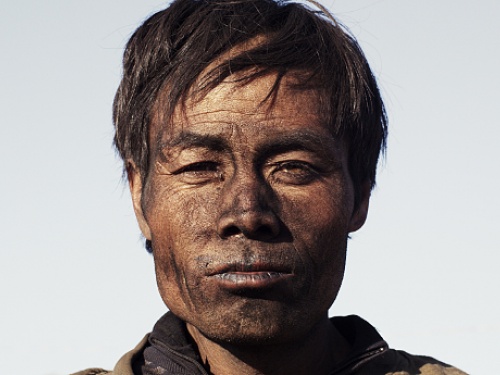ICA Cinemas: Best of 2016
Looking back at the year in ICA film programming
ICA Cinema & Film Programme Manager Nico Marzano takes a look at some of the best films screened this year at the ICA.
In 2016 ICA Cinemas used its weekly film programme and wide array of film festivals, retrospectives and special Q&A screenings to champion works of artistic value and support films that generated change on a socio-political level. With a special focus on documentaries, the film programme also showcased the best of World cinema fiction features, all while engaging with the audience on several different levels: aesthetically, politically and emotionally.
Here are five stand-out films that we were able to watch this year on the big screen on the Mall.
► Behemoth
Zhao Liang's devastating documentary represented possibly the most important project for ICA Film in 2016. It was not only shown at the ICA for six consecutive weeks, but also distributed and programmed in multiple venues across the UK and Ireland. Behemoth is a masterful journey into the landscapes and devastation of Inner Mongolia, a region in the north of China where the relentless and desperate search for development is destroying its places and people. Accompanied by a hypnotic soundtrack, Zhao Liang takes the viewer on a literally hellish journey, loosely based on Dante’s Inferno and inspired by the wasteland that has taken over the area. Zhao introduces each section of the film—each in a new location—with first-person captions paraphrased from Dante’s work.
While Liang's previous works are known for a more intimate, investigative approach, such as his portrayal of Beijing’s drop-outs and junkies in his first film Paper Airplanes in 2001, and Chinese government oppression in Petition in 2009, Behemoth is a visually stunning documentary on the wild, merciless industrialisation taking place in Inner Mongolia but that is in no way confined to that part of the world. It is part of a global issue to which we can no longer turn a blind eye.
► Fire at Sea (Fuocoammare)
I had the privilege to attend the worldwide premiere of this film in Berlin last February, and Fire at Sea by Gianfranco Rosi revealed itself as one of the most powerful works I have seen in recent times. It was an easy one to predict as a potential winner of the Golden Bear at the recent Berlinale, and rightly so. Rosi tells the tales of migrants by choosing an unconventional point of view, avoiding rhetoric while still acting as a tremendous call for action.
► Embrace of the Serpent (El Abrazo de la Serpiente)
In 2015 Colombian filmmaker Ciro Guerra entered the 47th Directors’ Fortnight with a film heralded as the first shot in the Amazonian rainforest in over 30 years. Embrace of the Serpent tells the story of a Columbian shaman who embarks on a lengthy quest with two scientists to rediscover a sacred healing plant. Blending elements of documentary and fiction to construct a visually stunning piece of cinema that is as much an anthropological essay as it is thrilling adventure, the film continues to attract a large audience at the ICA.
► Rams (Hrútar)
Another highlight of the ICA programme in 2016 was Grímur Hákonarson’s Rams. For his second feature, Hákonarson returned to fiction filmmaking following his documentary A Pure Heart (Hreint Hjarta) in 2012. Rams follows two estranged brothers who must conquer their differences if they are to save their isolated flock of sheep from illness. Hákonarson finds a solid art-house film within stunning Icelandic landscapes that are brought to the fore by Sturla Brandth Grøvlen’s cinematography. This tale of brotherhood quickly grows on you, and portrays an affecting story worthy of its Un Certain Regard win at Cannes in 2015.
► The Club (El Club)
Several priests and a nun live together on the coast of Chile, their religious duties intermixed with the training of a greyhound ahead of a race. A new priests arrives at the door, but is pursued by his past troubles. Pablo Larraín’s The Club is a mysterious film and so are its characters. They come across as repugnant and somewhat inhuman for the hatred they seem to release. However, we also feel something deeply human towards these characters: we recognise the negative aspects of humanity such as the cowardice and cruelty exhibited against the greyness of everyday life. In spite of all this darkness, the film expresses a pervasive spirituality and a heartfelt, poignant undercurrent tempers the relentless condemnation often seen in representations of evil. Perpetrators and victims are not easy to distinguish in this grim yet outstanding metaphor for the church and its mechanisms of power. ■
This article is posted in: Film
Tagged with: Film, ICA Cinema, Behemoth, Embrace of the Serpent, Fire At Sea, Rams, The Club, Cinema





